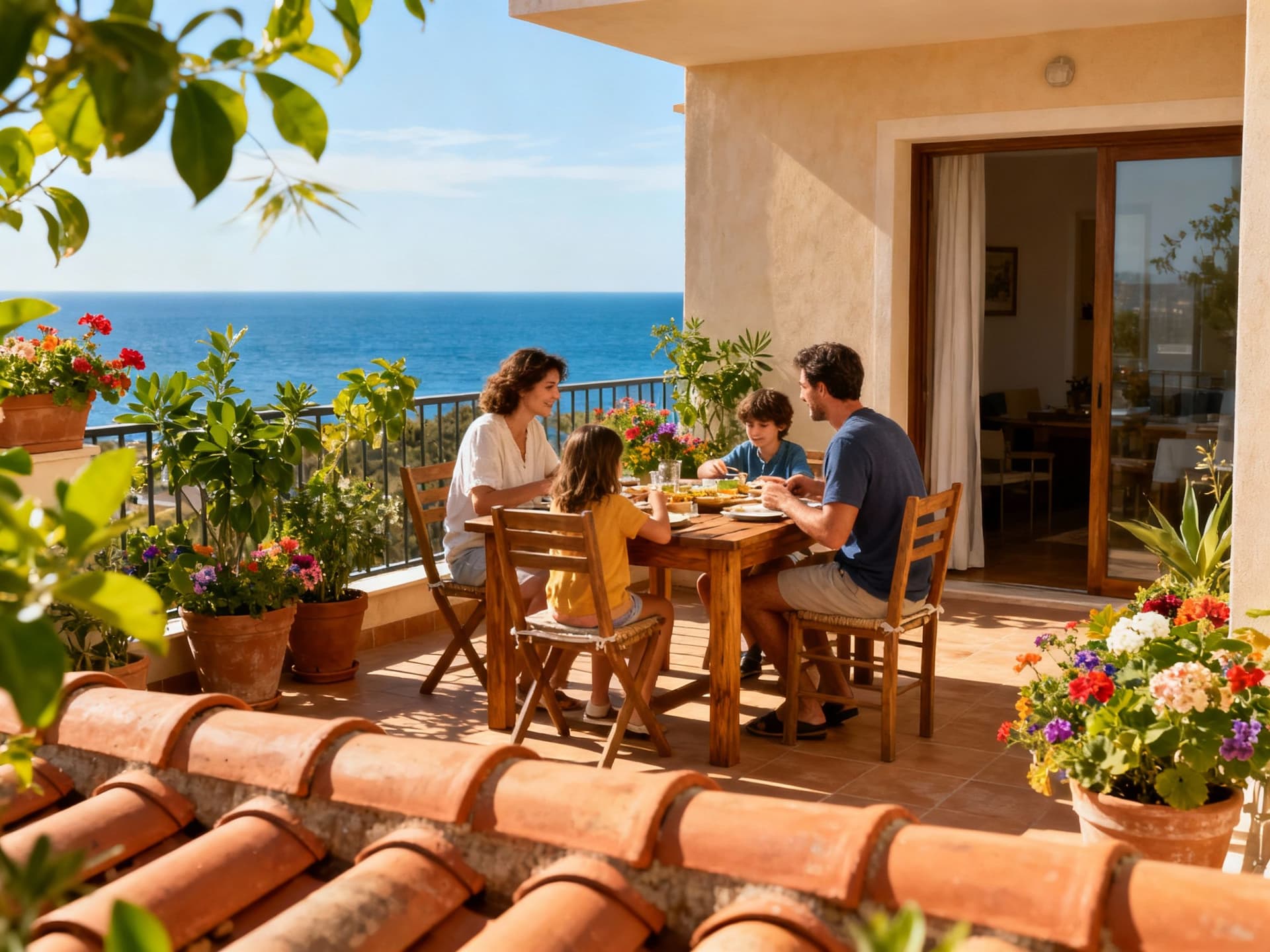Italy: When Tourist Hype Masks Steady Rental Yields
Italy’s allure hides seasonal and municipal quirks; pair sensory knowledge with rent-per-m², occupancy and yield data to convert lifestyle into reliable income.
Imagine sipping espresso on a shaded Via dei Coronari balcony while a steady stream of short-term guests wanders past the piazza below — and then opening a spreadsheet to check whether that romance pays. Italy offers scenes that sell daydreams: coastal terraces in Puglia, cobbled lanes in Trastevere, and Alpine weekends in the Dolomites. Those scenes matter to buyers, but so do occupancy rates, net yields and local regulation. This piece puts lifestyle first — the smells, sounds and rhythms of Italian life — then tests it against rental demand and yield data so investors can judge both heart and mathematics.
Living the Italy lifestyle — more textured than the postcard

Italy’s daily rhythm varies by scale and season. Morning espressos in Milan’s Brera are brisk and businesslike, while in Naples you’ll hear vendors shouting at the fish market and families gathering for late-afternoon passeggiata. Summers bring beaches, festivals and a flood of tourists; winters slow coastal towns and enliven ski resorts. For an investor, that seasonality is not romantic detail — it’s the axis of cash flow: when guests arrive, what they pay, and how long units sit empty.
Neighborhoods that live differently
You get different rental economics walking a few kilometres. In Rome, Centro Storico and Trastevere command higher nightly rates but produce lower gross yields because purchase prices are elevated. Peripheral pockets — Garbatella or San Giovanni — deliver lower capital entry and higher long-term rent-to-price ratios. In Milan, the Porta Romana and Navigli belts appeal to young professionals; they generate steadier long-lets but cap rates sit below southern cities because price per square metre is higher.
- Lifestyle highlights that also move rental demand
- Morning market runs: Campo de’ Fiori (Rome), Mercato di Sant’Ambrogio (Florence), Mercato Centrale (Milan)
- Evening rituals: aperitivo strips in Navigli (Milan) and San Lorenzo (Rome) that attract young renters
- Seasonal anchors: Amalfi Coast and Sicily for summer short-lets; Cortina and the Dolomites for winter ski demand
Making the move: matching the lifestyle to rental math

The romantic script is easy; the underwriting is not. Recent market surveillance shows rising rents in many cities while price growth has been uneven, which creates micro-opportunities for yield-focused buyers. Use local rent-per-m² and quoting platforms to compare achievable rent against asking price per m². Where asking prices are still compressed relative to rent growth, gross yields expand — but net yields depend on management, taxation and vacancy.
Property types and how they perform
Studio and one-bedroom apartments near universities or transit hubs deliver high turnover and strong yields; think student rentals in Bologna or short-commute units in Turin. Larger historic apartments in city centres sell at premiums and suit hospitality-style short-lets but wear higher maintenance and regulatory risk. Rural trulli and country villas can appreciate and offer seasonal rental spikes, yet they often suffer extended low-occupancy months.
How local agencies translate lifestyle into investable stock
Experienced local agents do more than show pretty flats: they map tenant pools, advise on permitted short-let zones, price for seasonality, and estimate operating costs. In markets where Nomisma and other monitors note rising rents and stable yields, agencies that supply historical booking data and absentee-owner management services materially reduce vacancy risk. Ask agencies for anonymized occupancy rates and comparable yields — those numbers beat glossy brochures.
- Step-by-step checklist to align lifestyle and rental returns
- 1) Map your target tenant (students, professionals, tourists) and their peak months; compare asking rents across 12 months.
- 2) Calculate gross yield = (annual rent × 12) ÷ purchase price; then subtract estimated taxes, management and vacancy for net yield.
Insider knowledge matters: Italy’s tourism recovery restored international arrivals and created durable demand corridors. ISTAT data shows tourism volumes concentrated in Tuscany, Veneto and Lazio, which supports both short-lets and long-term service jobs that feed rental markets. But high tourist arrivals also invite stricter municipal short-let rules and seasonal price volatility — a double-edged sword for investors counting on summer peaks.
What expats wish they’d known before buying
Expat owners often overestimate how fast premium seasonal income covers steady costs. They also underestimate municipal differences: an Amalfi town may ban new short-lets while a nearby village permits them. Language matters less than local relationships — a trusted notary and a gestor (administrative facilitator) speed transactions. Finally, factor in winter months: many coastal holiday towns reduce services off-season, lowering long‑let demand.
Cultural and seasonal realities that affect returns
Italian festivals, harvests and school calendars create predictable demand spikes. Carnival in Venice and fashion weeks in Milan inflate short-let rates; university semesters create stable student lettings. Conversely, many southern towns see August exodus by locals which temporarily empties cities and reduces long-term tenancy churn. Build underwriting models around these patterns rather than assuming constant demand.
Long-term lifestyle: how your life changes after the move
Buyers rarely regret the everyday pleasures: morning markets, neighbourly cafés and railway trips to regional weekends. But the day-to-day also demands paperwork, maintenance and local networking — prepare for hands-on management or budget for a reliable property manager. Over five years, properties that match community life and tenant demand tend to reduce vacancy and protect net yields.
Conclusion: fall for the life, underwrite the numbers. Italy sells imagination — piazzas, food and sunlight — but returns come from data: rent-per-m², seasonality, local rules and realistic net-yield calculations. Start with a clear tenant profile, request occupancy and comparable yield figures from agents, and stress-test your cash flow for low season months. If you want help mapping a specific city or neighbourhood’s rental corridor, an experienced local agency and up-to-date market datasets are the practical bridge from romance to return.
Dutch investment strategist who built a practice assisting 200+ Dutch clients find Spanish assets, with emphasis on cap rates and due diligence.


